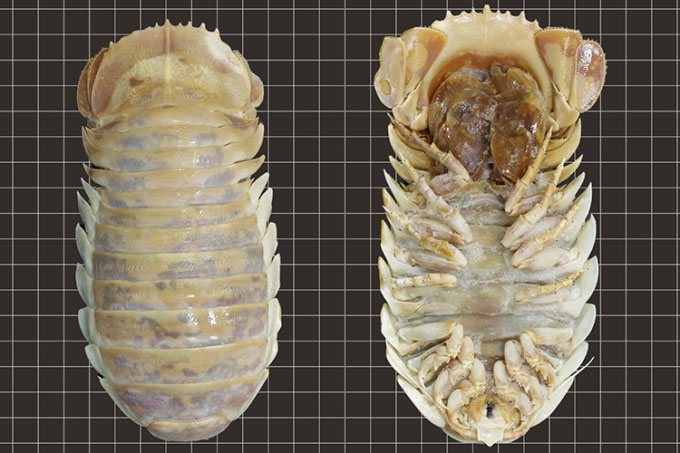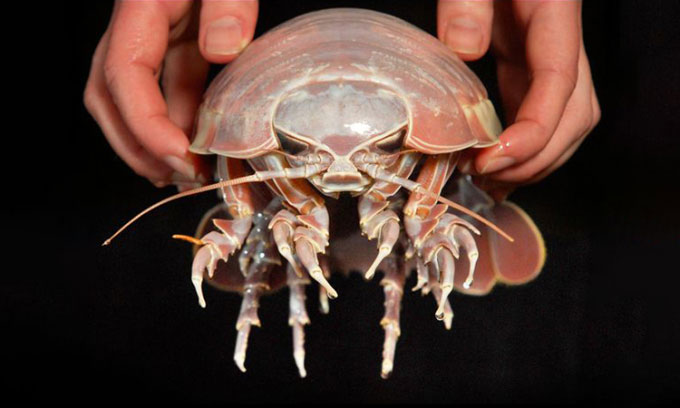Analyzing DNA, scientists discovered a new giant sea lice species

Specimens of Bathonymus yucatanensis at Japan's Enoshima Aquarium.
As published in the Journal of Natural History on August 9, international researchers from Taiwan, Japan and Australia named the new species Bathonymus yucatanensis. It is about 26 cm long and 13 cm wide, up to 2,500% larger than the common wood louse.
There are about 20 known species of giant sea lice in the genus Bathonymus, 14 of which inhabit the deepest, darkest and coldest waters of the Atlantic, Pacific and Indian oceans. The largest genus of crustaceans in this order are also known as "living fossils" when they roamed the ocean floor from the Middle Age tens of millions of years ago, according to BBC.
The specimen Bathonymus yucatanensis in this study was collected from a trap off the Yucatán peninsula of Mexico in 2017 at a depth of about 600 to 800 m, and subsequently acquired by the Enoshima Aquarium in Fujisawa, Japan.
For the past five years, it was confused with another giant sea lice, Bathonymus giganteus, until biologist Huang Ming-Chih from Taiwan's National Tainan University decided to sequence its DNA. animals in a research project on arthropod genetics.

The genus Bathonymus are known as living fossils.
Huang was surprised to see a significant difference between the genomes of the new sea lice and Bathonymus giganteus. "At first, I thought there was a mistake, so I repeated the DNA sequencing experiment a few times, but the results were still the same," said the lead author of the study.
Compared with Bathonymus giganteus, Bathonymus yucatanensis has a slimmer body proportions and a shorter total length. Its extremely long beard and milky yellow body also stand out more than its gray relative.
Despite its intimidating appearance from prehistoric times, Bathonymus yucatanensis is harmless to humans. They mainly feed on the carcasses of fish and whales sunk on the ocean floor.
- Lice debris removal within a day
- Ancient lice trapped in amber 100 million years
- Pandemic hair is about to explode when 98% of lice are resistant
- How to prevent pubic lice - Insects cling to 'closed areas'
- Lice 'write' human history
- Discovered a new giant oyster species living in Australia
- The cure for pubic lice is simple and cheap
- DNA lice reveal human migration
- Learn about the new giant red leech species found in Indonesia
- Eye lashes also have lice
- Dinosaurs must also taste suffering because of ... lice
- New species of giant tortoise discovered in the Galapagos Islands
 Surprised: Fish that live in the dark ocean still see colors
Surprised: Fish that live in the dark ocean still see colors Japan suddenly caught the creature that caused the earthquake in the legend
Japan suddenly caught the creature that caused the earthquake in the legend A series of gray whale carcasses washed ashore on California's coast
A series of gray whale carcasses washed ashore on California's coast Compare the size of shark species in the world
Compare the size of shark species in the world